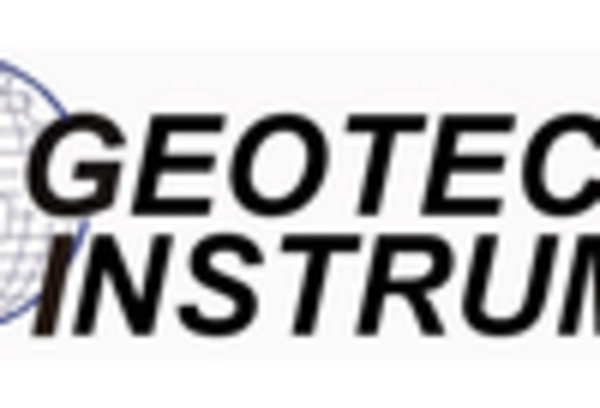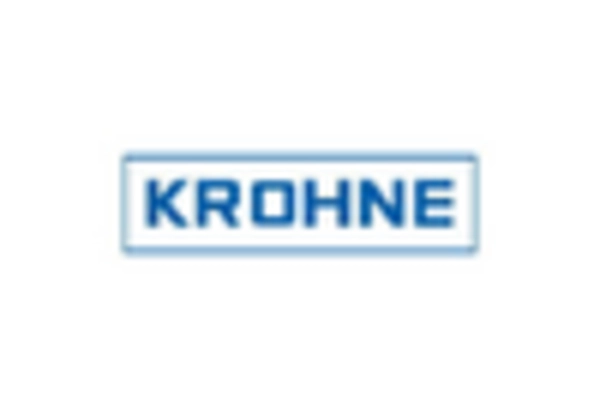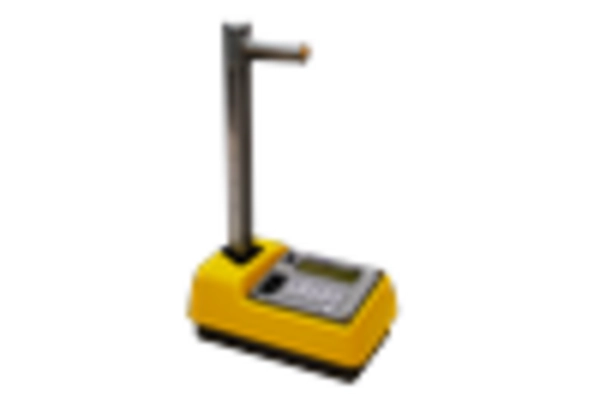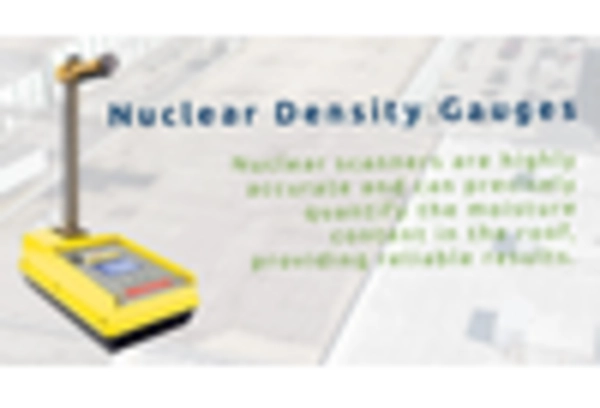Environmental Monitoring and Safety Applications
The Nuclear Density Gauge Market is also witnessing growth due to the increasing emphasis on environmental monitoring and safety applications. As industries face heightened scrutiny regarding their environmental impact, the need for accurate density measurements in soil and waste management has become critical. Nuclear density gauges are being employed to assess soil compaction and contamination levels, thereby aiding in environmental remediation efforts. This trend is expected to drive market expansion, with projections indicating a growth rate of approximately 5% annually. The ability of nuclear density gauges to provide reliable data in environmental assessments positions them as essential tools for compliance with environmental regulations. As awareness of environmental issues continues to rise, the Nuclear Density Gauge Market is likely to experience sustained demand in this sector.
Regulatory Standards and Compliance Requirements
The Nuclear Density Gauge Market is significantly influenced by stringent regulatory standards and compliance requirements across various sectors. Governments and regulatory bodies are enforcing guidelines that mandate the use of accurate measurement tools to ensure safety and quality in construction and environmental applications. This regulatory landscape is compelling companies to invest in nuclear density gauges that meet these standards, thereby driving market growth. For instance, the construction industry is required to adhere to specific density measurement protocols, which has led to an increased adoption of nuclear density gauges. As regulations become more rigorous, the Nuclear Density Gauge Market is expected to expand, with an estimated growth rate of 6% annually as companies seek to comply with these evolving standards.
Growing Focus on Quality Control in Manufacturing
Quality control remains a pivotal aspect of manufacturing processes, and the Nuclear Density Gauge Market is benefiting from this focus. Industries such as automotive, aerospace, and construction are increasingly utilizing nuclear density gauges to ensure that materials meet specified density requirements. This trend is driven by the need to minimize defects and enhance product reliability. The market is projected to grow as manufacturers recognize the value of incorporating advanced measurement tools into their quality assurance protocols. With an estimated market growth of 7% over the next few years, the Nuclear Density Gauge Market is likely to see heightened demand as companies strive for excellence in their production processes. The emphasis on quality control is expected to further solidify the role of nuclear density gauges in various manufacturing sectors.
Technological Innovations in Measurement Techniques
Technological advancements are playing a crucial role in shaping the Nuclear Density Gauge Market. Innovations such as improved sensor technology and enhanced data analytics capabilities are making these gauges more accurate and user-friendly. The integration of wireless communication features allows for remote monitoring and data collection, which is increasingly appealing to industries that prioritize efficiency. Furthermore, the development of portable nuclear density gauges has expanded their applicability across various sectors, including agriculture and environmental monitoring. As these technologies evolve, they are expected to drive market growth, with projections indicating a potential increase in market size by 10% over the next five years. The continuous evolution of measurement techniques is likely to position the Nuclear Density Gauge Market as a leader in precision measurement solutions.
Increasing Demand in Construction and Civil Engineering
The Nuclear Density Gauge Market is experiencing a notable surge in demand, particularly within the construction and civil engineering sectors. As infrastructure projects expand, the need for precise density measurements in materials such as soil, asphalt, and concrete becomes paramount. This demand is driven by the necessity for quality assurance and compliance with safety standards. In recent years, the market has seen a growth rate of approximately 5% annually, reflecting the increasing reliance on nuclear density gauges for effective project management. The ability of these gauges to provide real-time data enhances decision-making processes, thereby contributing to the overall efficiency of construction operations. As urbanization continues to rise, the Nuclear Density Gauge Market is likely to witness sustained growth, driven by the ongoing need for reliable measurement tools in construction applications.

















Leave a Comment